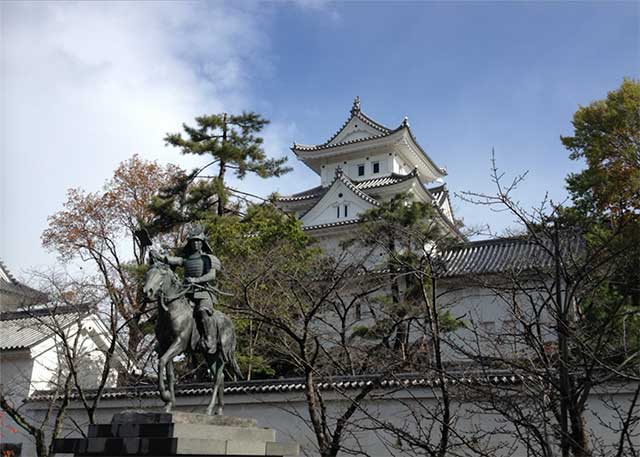
Ogaki Castle, located in Ogaki City, Gifu Prefecture, was originally built around 1500 by Miyakawa Yasusada and named Ushiya Castle due to the Ushiya River serving as a natural moat. The castle was also known as Bi Castle and Kyoroku Castle. The Ogaki region held strategic importance as a transit point between Mino and Omi Provinces, a fact recognized by Saito Dosan, the Viper of Mino. When Oda Nobunaga captured Gifu Castle in 1567, Ogaki Castle came under Oda rule. Both Nobunaga and Toyotomi Hideyoshi understood the strategic significance of the castle. In 1595, Hideyoshi ordered Ito Sukemori to expand the castle and construct the Tenshu keep.
Interestingly, Ogaki Castle featured four moats and a four-story keep, an unusual design since the number four (shi) is phonetically similar to the word for death, making it an unlucky number. To avoid the ominous connotation, the first floor was considered a base floor, and the "tower" was said to stand three stories high. Ogaki Castle was rumored to have been coated in lacquer over its whitewashed walls.
Ogaki Castle played a significant role in the Battle of Sekigahara, serving as the gathering site for Western forces under Ishida Mitsunari before being outmaneuvered by Eastern forces. Tokugawa Ieyasu had initially considered laying siege to Ogaki and even planned to flood the castle by damming the nearby Ibi and Kuise rivers. However, this approach would have been both time-consuming and costly. Instead, Ieyasu spread rumors that he would turn back through Sekigahara to capture Ishida Mitsunari's fief, Sawayama, and then attack Toyotomi Hideyori in Osaka Castle. This strategy lured Ishida Mitsunari and his forces out of Ogaki on the night of October 20, 1600. They marched 14 kilometers to Sekigahara under cover of darkness and rain, leading to the largest samurai battle in history the next morning.
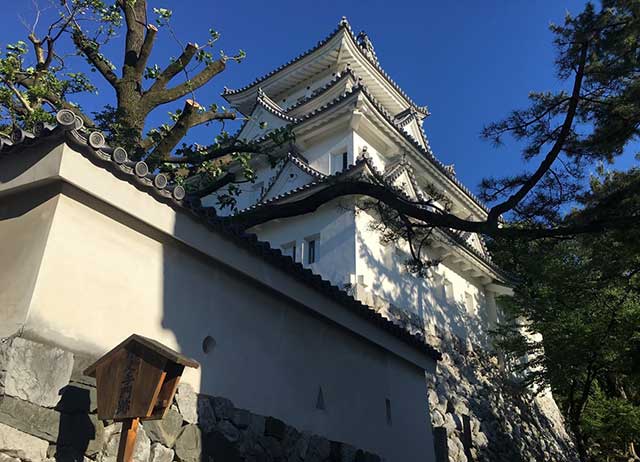
Ogaki Castle was governed by three generations of the Ishikawa clan, followed by two generations of the Matsudaira (Hisamatsu) clan, two lords from the Abe clan, and then a single Matsudaira, before being handed over to the fudai daimyo Toda clan in 1635. The Toda clan controlled Ogaki for 12 generations until the Meiji Restoration. Outside the castle grounds, in front of the Tenshu, stands a statue of Toda Ujikane, the first Toda lord of Ogaki, dressed in armor and mounted on a horse.
Ogaki Castle's historical significance and survival from complete destruction during the Meiji period led to its designation as a National Treasure in 1936. However, it was destroyed by wartime aerial bombing raids nine years later. The castle was reconstructed in April 1959 using concrete and now houses a collection of items related to the castle and the Battle of Sekigahara. Parts of the outer moat are still visible, and from the air, the tree-lined canals' large square shape stands out among the urban landscape.
Interestingly, one of Ogaki Castle's gates now exists in Kakamigahara City, having been purchased and relocated when much of the castle was abandoned and demolished during the Meiji Period. Another gate was relocated to serve as the main gate for the Heirin-So Temple in Ogaki. Among Japan's castles, only four can be faithfully reconstructed, and Ogaki Castle is one of them, raising the possibility that it may someday be restored to its original wooden state.
See also
-
Nagahama Castle
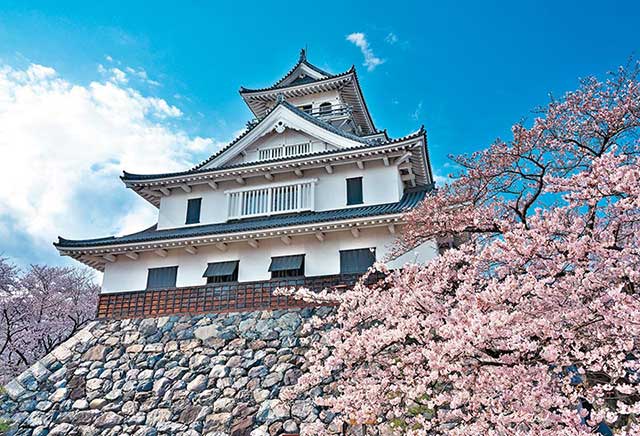
Hashiba, later known as Toyotomi Hideyoshi, received Odani Castle and the surrounding lands from Oda Nobunaga after the defeat of the Azai clan. However, Odani Castle was located high in the mountains, which made it poorly suited for the effective administration of the territory. For this reason, in 1575 Hideyoshi began constructing a new castle in the village of Imahama on the shore of Lake Biwa. Taking the character naga from Nobunaga’s name, he renamed both the village and the new castle Nagahama.
-
Kokura Castle
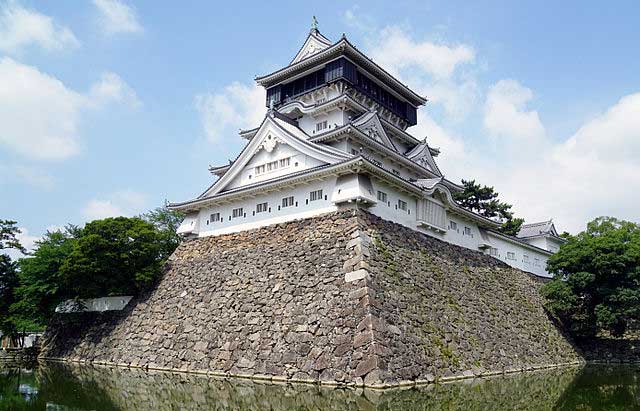
Kokura Castle is traditionally considered to have been founded by Hosokawa Tadaoki (1563–1645), although by the time the Hosokawa clan came to control these lands, the fortification had already existed since at least 1569 and was most likely built by members of the Mori clan.
-
Ikeda Castle
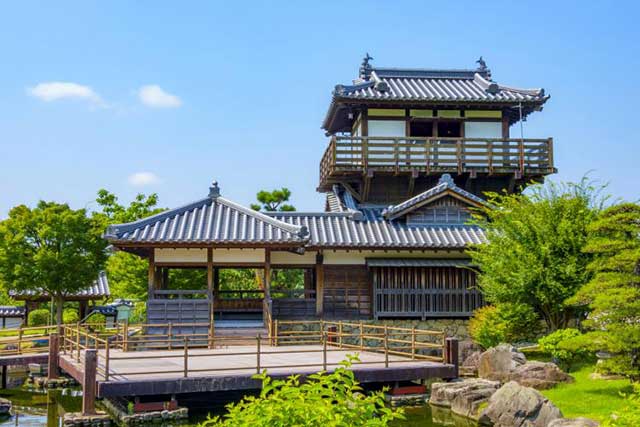
In 1334, Ikeda Noriyoshi built a small fort on this site, which over time was repeatedly expanded and rebuilt. During the Ōnin War of 1467–1477, the Ikeda clan supported the Western Coalition. As a result, Ikeda Castle was attacked and captured by the forces of the Eastern Coalition, but it was soon recaptured, allowing it to avoid serious destruction.
-
Aizu-Wakamatsu Castle
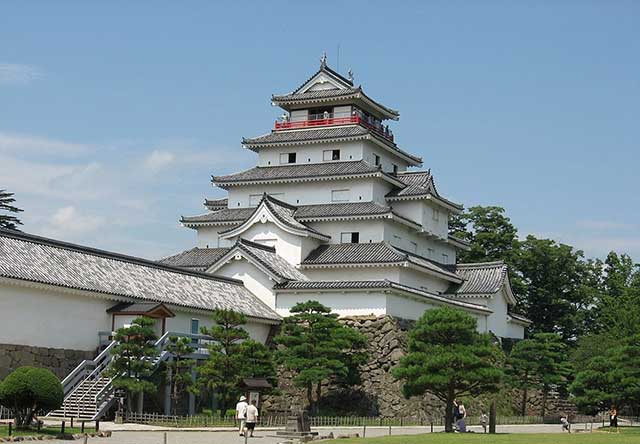
Aizu-Wakamatsu is the most powerful and at the same time the oldest castle in the Tōhoku region in the north of Honshu Island. Its history begins in the 14th century and is closely connected with the Ashina clan, whose members claimed descent from the legendary Taira family.
-
Maruoka Castle
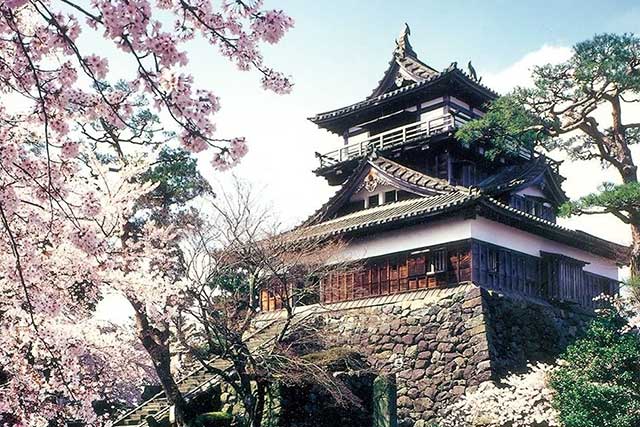
Maruoka Castle is located in the central part of the former city of Maruoka, which is now part of the city of Sakai. This area lies in the northeastern part of Fukui Prefecture. The castle was built on the bank of the Kuzuryu River, on the side opposite Fukui City, which once served as the administrative center of the former Echizen Province. Thanks to its location, Maruoka held significant strategic importance, as it controlled two major routes at once: the Hokurikudo highway leading from Kaga Province and the Mino Kaido road connecting these lands with Mino Province.
-
Marugame Castle

Marugame is part of the so-called “Authentic Dozen,” a group of twelve castles whose donjons have survived to the present day without major reconstructions since the Edo period.
-
Iyo Matsuyama Castle
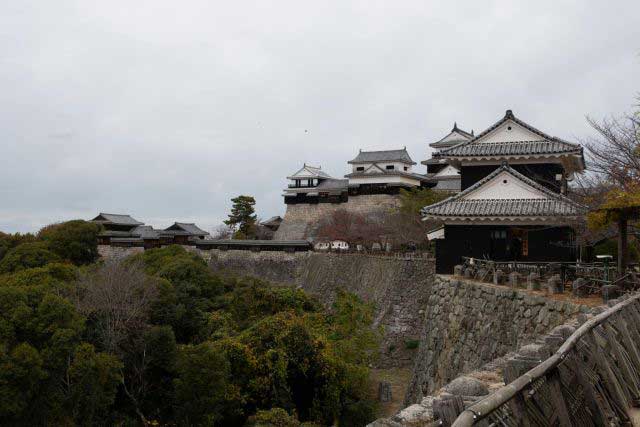
Historically, the center of Iyo Province—corresponding to today’s Ehime Prefecture on the island of Shikoku—was the city of Imabari, while the Matsuyama area was regarded as an agricultural hinterland with broad plains and low hills. During the Muromachi period, the central part of the province was governed by the Kano clan from Yuzuki Castle. With the onset of the Sengoku period, however, this clan lost its former influence and was forced to survive in the shadow of the more powerful Mori and Chōsokabe clans. After Toyotomi Hideyoshi’s forces conquered Shikoku in 1587, the northern part of Iyo Province was granted to Fukushima Masanori, one of the so-called “Seven Spears of Shizugatake.” In 1595, Masanori was transferred to Kiyosu Castle, and the lands around Matsuyama were given to another of the Seven Spears, Katō Yoshiaki, who received Masaki Castle and an income of 60,000 koku of rice.
-
Kanazawa Castle

Construction of Kanazawa Castle began in 1580 on the orders of Sakuma Morimasa, a vassal of Oda Nobunaga. The castle was built on the site of the Ikko-ikki sect's Oyama Gobo temple, which is why it is sometimes called Oyama Castle. Morimasa managed to build several moats and begin construction of a castle town. However, after his defeat at the Battle of Shizugatake in 1583, he was executed, and ownership of the castle passed to Maeda Toshiie (1538–1599).

